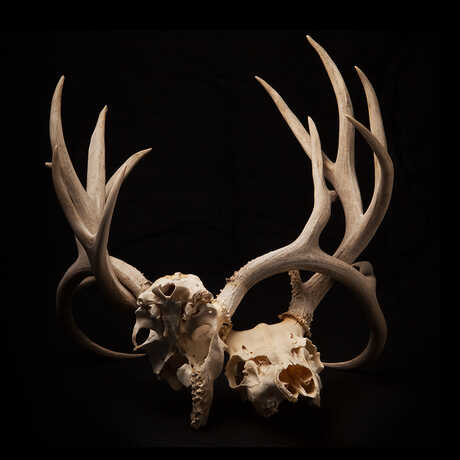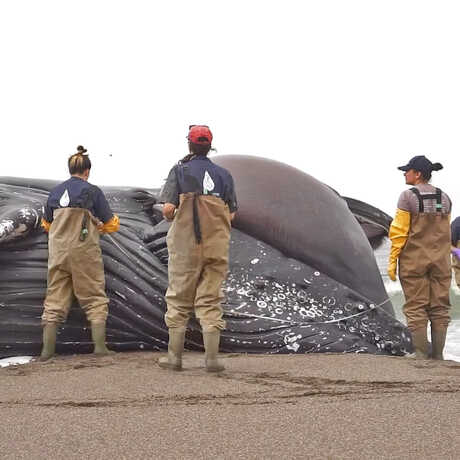
Whale hello there! You’ll flip(per) for this supersized set of activities for ages 4-8 that celebrates the beauty, brains, and brawn of whales.
From their record-breaking migrations to their haunting undersea songs, cetaceans—whales, dolphins, and porpoises—are as captivating to humans as they are critical to ocean ecosystems. Connect with these charismatic creatures through a week of guided videos, crafts, activities, and more.
(Please note: While Science @ Home activities are designed to be conducted by kids, some little ones might need adult help with reading instructions and preparing crafts).

Day 1: Cetacean superstars
Whales are wonders of evolution, intelligence, and resilience. Make a splash at the start of whale week with a personality quiz, egg carton craft, and coloring page. (45-60 minutes)
Whales may be famous for their record-breaking size, but they are also an amazingly diverse group, just like humans! Take this personality quiz to determine the whale that best matches your personality.
Whales live in water, but they still need to breathe air. How do they do it? When whales come to the water’s surface, they take deep breaths of air using a special nostril on the top of their heads called a blowhole. When they exhale, their warm breath hits the cold air and can look like a spray of mist. Make your own exhaling whale out of an egg carton!
Whales come in many shapes and sizes. How many of these do you recognize?
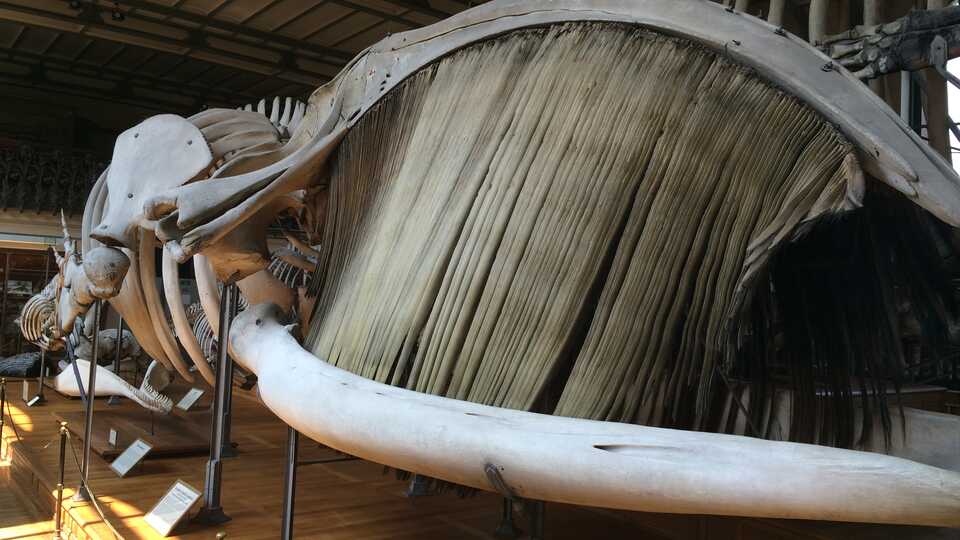
Day 2: Baleen whales
The bigger the whale, the smaller the prey! Instead of using teeth, some whale species gulp ocean water, then strain out all the krill (tiny shrimp-like animals the size of your fingernail) using special hair-like plates called baleen. Today's activities will give you a great idea of what it's like to be toothless! (45-60 minutes)
Photo: "Giant plates of baleen" by Mira Mechtley is licensed under CC BY 2.0.
While some whales have teeth, many others have a mouthful of something special called baleen. These tightly packed bristles are made of keratin, the same material as our fingernails! As a whale takes big gulps of water and then pushes the water out with their tongue, the baleen catches small critters like krill or plankton, which the whale then eats. Follow the instructions below to see what it's like to eat like a whale.
Cetaceans (whales, dolphins, and porpoises) are mammals adapted to live their whole lives in the water. They range in size from the tiny vaquita (4.6 feet) to the world’s biggest animal, the blue whale (110 feet). All whales can be divided into two groups: ones with teeth and ones with bristles known as baleen. Each has a different way of catching and eating their food. Make your own toothed (sperm whale) and baleen whale (humpback whale) to see the differences.
Gray whales make one of the longest migrations of any mammal, traveling 10,000 miles up and down the Pacific Coast from Alaska to Mexico every year. Color one as it makes its way through California's kelp forests.
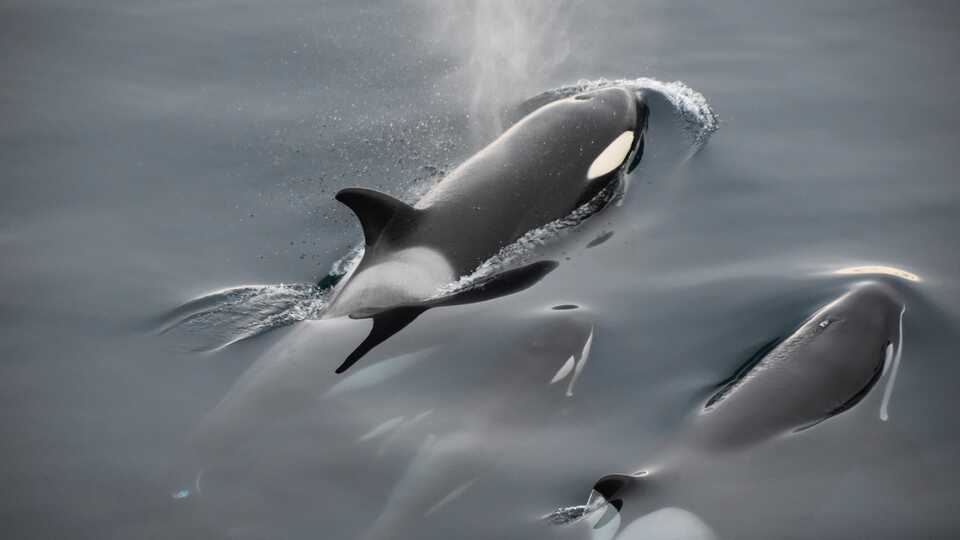
Day 3: Toothed whales
Baleen isn't for everybody. Meet some whales with legitimate chompers, from dolphins with pointy teeth, porpoises with shovel-shaped teeth, and the narwhal with its epic tusk. (45-60 minutes)
Whether to play, communicate, or hunt, dolphins love jumping out of the water. When the dolphin jumps high enough, it’s called a "breach." Create your own leaping, breaching dolphin!
Join Academy Presenter Patrick in the Naturalist Center to learn all about the different species of whales and dolphins you might see on your next trip to the California Coast!
Wait, are orcas whales or dolphins? Well, technically they're both! There are many types of whales, including dolphins, and orcas are simply the largest species in the dolphin family. Color an orca mother and calf.
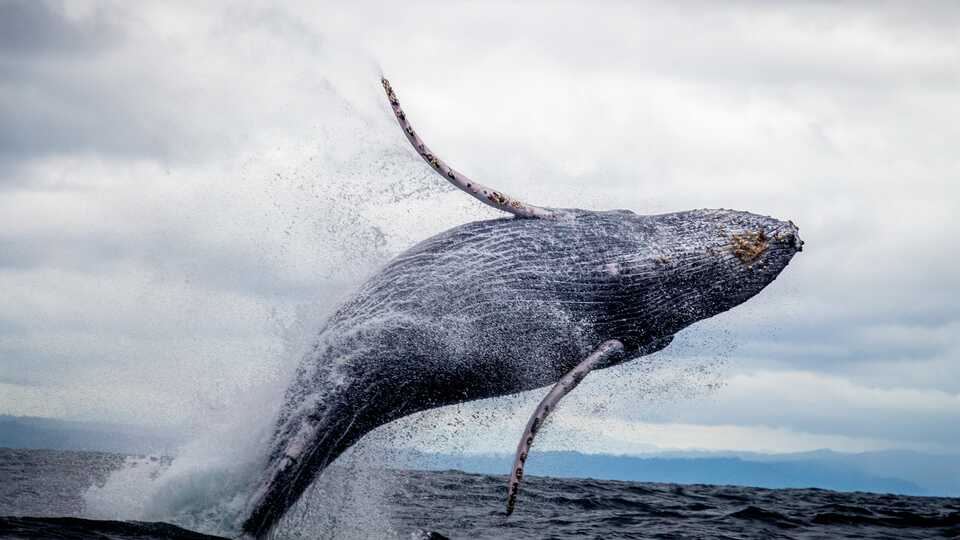
Day 4: Wonderful whales
Whales are uniquely adapted to survive and thrive at sea. Learn more about the complex marine ecosystems whales are part of—and how humans can improve the health of the entire ocean by helping whales. (60-90 minutes)
What happens when a whale dies at sea? Their body becomes an ecosystem! Make your own mixed media diorama of a whale fall using paper, miscellaneous craft supplies, and your imagination.
Mother blue whales keep their calves close and help them grow quickly with a nutritious, fatty milk. Assemble your own mother and calf pair.
Do you want to be a champion for whales? Learn more about these incredible animals and discover how rescue teams untangle whales caught in fishing gear.
Whales and dolphins make a variety of different calls and sounds to communicate underwater. Play a quick whale sound trivia game and join the aquatic chorus!
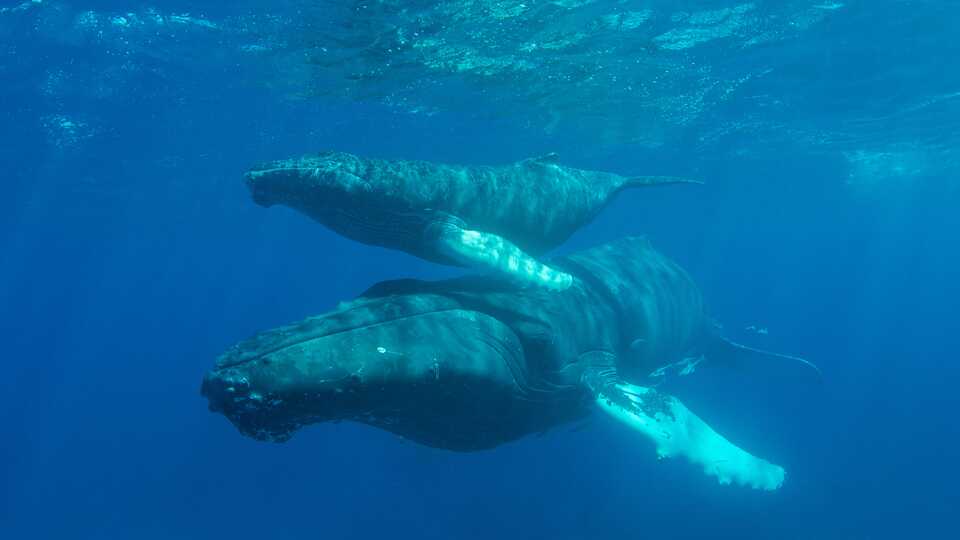
Kid and caregiver extension activities
Grab a senior member of your pod for a finful of extra whale-themed activities.
How do whales keep warm in cold ocean waters? Be a scientist and experiment with your own homemade blubber mitt to see.
Help us learn more about whales by uploading your pictures of them! Share your photos of marine mammals, including whales, to help community scientists identify and track how these creatures move around the world.
Learn how Academy scientists are collaborating with others to learn from whale strandings in Northern California as part of our Thriving California initiative to fight climate change, stop biodiversity loss, and advocate for nature in the Golden State.
As you watch the video, think about the following questions. Share your answers with a friend or family member or just think in your head.
- Why is it important for people to learn what caused a whale’s death?
- What kinds of information can we learn by studying a whale after it has died?
- How can we use what we learn from whale carcasses to help whales that are still alive?
